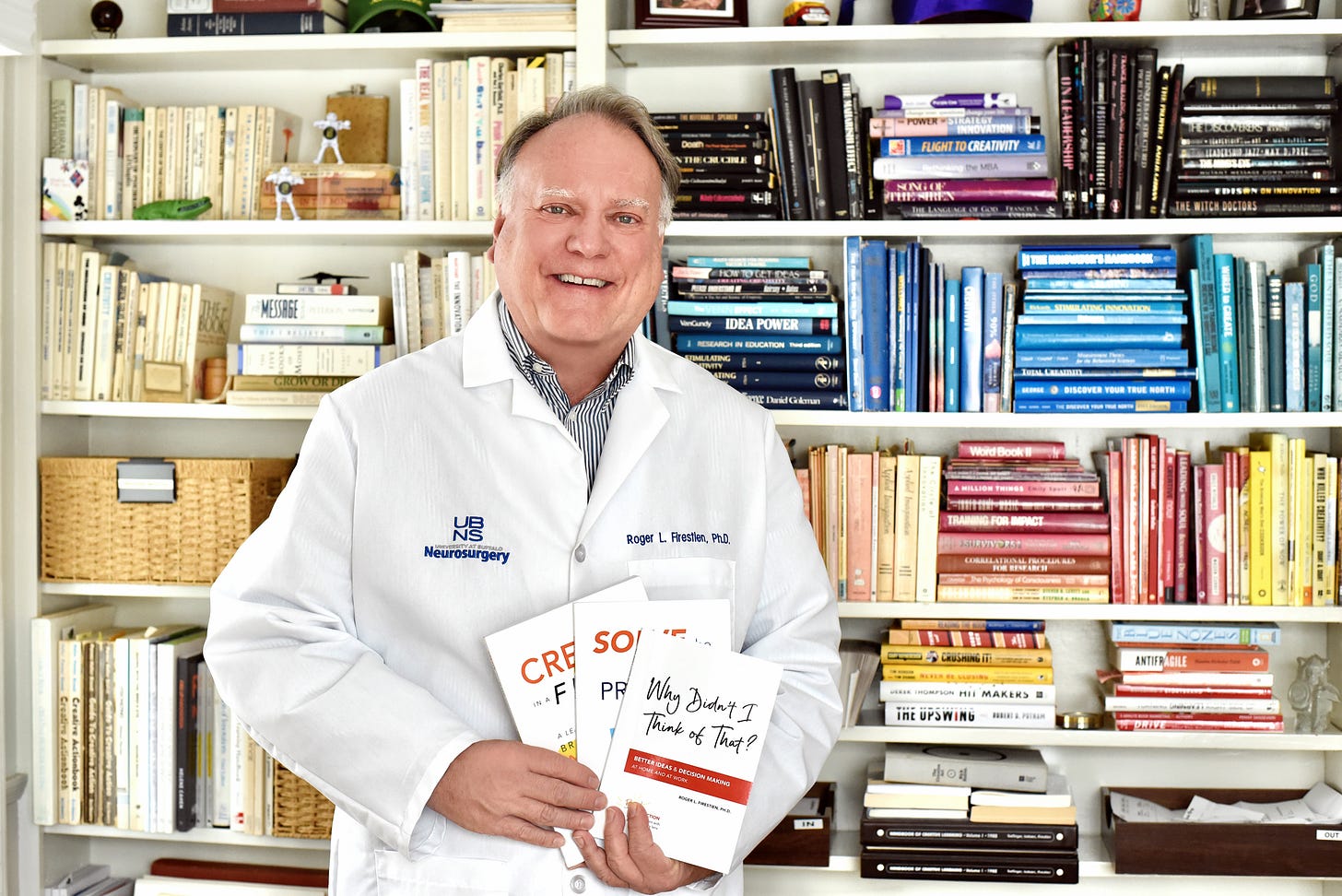There have been many moments in our lives where we encounter a problem, and we want to find a way to resolve it as soon as possible. But, more often than not, we don’t find the right solution right away, and what we thought may be a one-time quick fix becomes something that can be reoccurring. This occurs not only in the workplace, but also in our everyday lives.
Dr. Roger Firestien has been in the creative business for 45 years and has worked with many major companies to resolve lingering issues that they haven’t been able to fix until he stepped in to assist. He took an issue that Clorox had for 77 years and solved it in 15 minutes. He also helped General Motors reduce their weekly spending amount by $50,000.
In his book, “Solve the Real Problem,” Firestien walks people through how to get to the root cause of the problem you and/or your company may have. Through a process called Creative Problem-Solving, or CPS, Firestien teaches people to ask creative questions in order to clarify what the actual problem is. From there, they will then brainstorm ideas to solve it, refine those ideas, and put together an action plan. As Firestien mentioned in this interview, most people know more about trying to find answers to the problem and not digging deeper and finding the root cause.
“About 99% of the time, what we think is the problem is actually not the problem. In working with clients over all those years and taking them through the creative problem-solving process and beginning with what they think was the real problem, when we generate a whole bunch of problem definitions, they say, ‘Well, that’s not it at all. That’s a smaller part of it,’ or ‘That’s a bigger part of it,’ or ‘We need a piece of the problem we can actually attack.’”
Prior to writing his most recent book, Firestien had written another book called “Create in a Flash.” As he said, he thought his work was done once that book was published, and he had outlined everything that was necessary for people to be successful in finding and solving the real problems that they faced. But once the book was published, people in the medical field and even the Department of Defense started reaching out to him to have his teachings help them and the people they train and teach.
“I went out and worked with these really smart, intelligent people and just introduced them to the idea that our first impression of the problem isn’t the problem at all. Just like how you brainstorm lots of ideas to come up with a really great idea, brainstorm lots of creative questions to come up with the best problem to solve. It’s a simple concept, but people aren’t familiar with that. They’re familiar with lots of ideas, but they’re not very familiar with generating lots of different restatements of the problem.”
The main reason why people have trouble with solving what is the real problem of their situation is because, as Firestien puts it, formalized education is the reason why people are not properly understanding and coming to the proper solution.
“We’re still using the same strategies that we were taught in elementary school to solve problems that are complex. Difficult needs creative ideas that are potentially dangerous. If I ask you what’s three plus three, you’re going to say six. If I ask you what’s the capital of Spain, you’re going to say Madrid. If I’m going to ask you what are all the ways to prevent my neighbor’s lawn from growing on my driveway and not bothering me, then it’s like ‘I don’t know.’ So, what’s the real problem here? And we’re not confronted with these really simple algorithmic problems. We’re confronted with problems that are dangerous. We’re confronted with problems we’ve never encountered before. It’s important to not accept your first definition of the problem as a real problem.”
Firestien adds that the best problem solvers are people who come from all walks of life, and it doesn’t matter what their background is, as long as they are able to find that creativity inside of them.
“Oftentimes, we think the idea is the creative act, but finding an elegant problem to solve, that really begins the process. In the book, we talk about how it doesn’t make a lot of sense to solve the wrong problem. The problem you see is the problem you solve. So, come up with lots of different definitions of the problem so you can see lots of problems and then pick the best one to work on. It’s OK to see all those problems. You can choose the one you want to solve.”
When teaching creative problem solving in his workshop and courses, Firestien noted that all the challenges that are presented are those that participants bring with them. It can be a personal problem, business problem, or community problem. Whatever it is, you bring it with you and learn about the problems that others bring with them, and then everyone collaborates to think of ideas and form creative solutions.
“You work with folks to help generate ideas for yours and you for other folks, and you work with folks to help develop action plans for them and for yourself. One of the things we like to emphasize is, we work on real stuff. We don’t do case studies. One of the things I’ve learned over the years is, you can do case studies and people get a superficial understanding of it and they say “That’s nice” and everything. But until you work on something that’s important to you, you don’t get it in your heart. And this is the stuff that you have to internalize.”
You can listen to the full interview above. To learn more about Roger Firestien, be sure to visit his official website.
If you would like to receive these newsletters in your inbox, please consider becoming a free or paid subscriber. The cost is $5/month or $40 for the full year.













Share this post